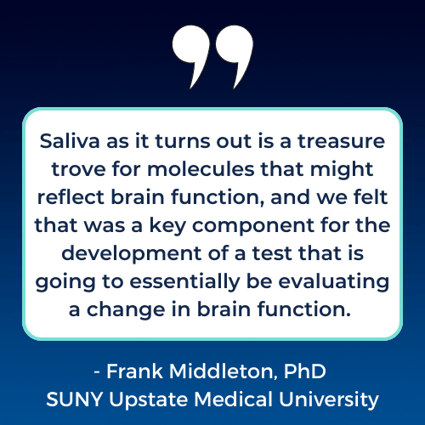The field of epigenetics is a new and rapidly growing discipline that can yield objective biomarkers for the early diagnosis of challenging neurological conditions, including autism spectrum disorder, mild traumatic brain injuries (concussions), and Parkinson’s disease, among others.

"The term epigenetics refers to any trait that could be passed from one generation of cells or individuals to the next generation, that doesn't rely on a change in DNA sequence for that transmission of the trait."
Frank Middleton, PhD SUNY Upstate Medical University
Saliva based, scientifically sound tools to aid in early diagnosis
While a person’s underlying DNA (their genetic code) does not change, epigenetics studies how internal biological processes and environmental factors influence gene expression. These changes can be measured through biomarkers such as non-coding RNA and microbiome content and they are present in saliva!

The epigenetic biomarkers we’ve discovered in saliva through our NIH funded research may hold the key to early detection for many neurological conditions.
Through this discovery, our research team developed a novel, saliva-based, diagnostic platform, Clarifi™ Dx.
Clarifi™ Dx combines the analytical power of Next-Generation Sequencing (NGS) and Artificial Intelligence (AI), with the rich, biological medium of saliva to develop novel diagnostic tools for the detection of autism spectrum disorder, mTBI, and Parkinson’s disease.
Quadrant Biosciences’ unique bioinformatics platform and CLIA-certified laboratories facilitate the development and validation of clinical assays to turn novel discoveries into commercially available solutions.





